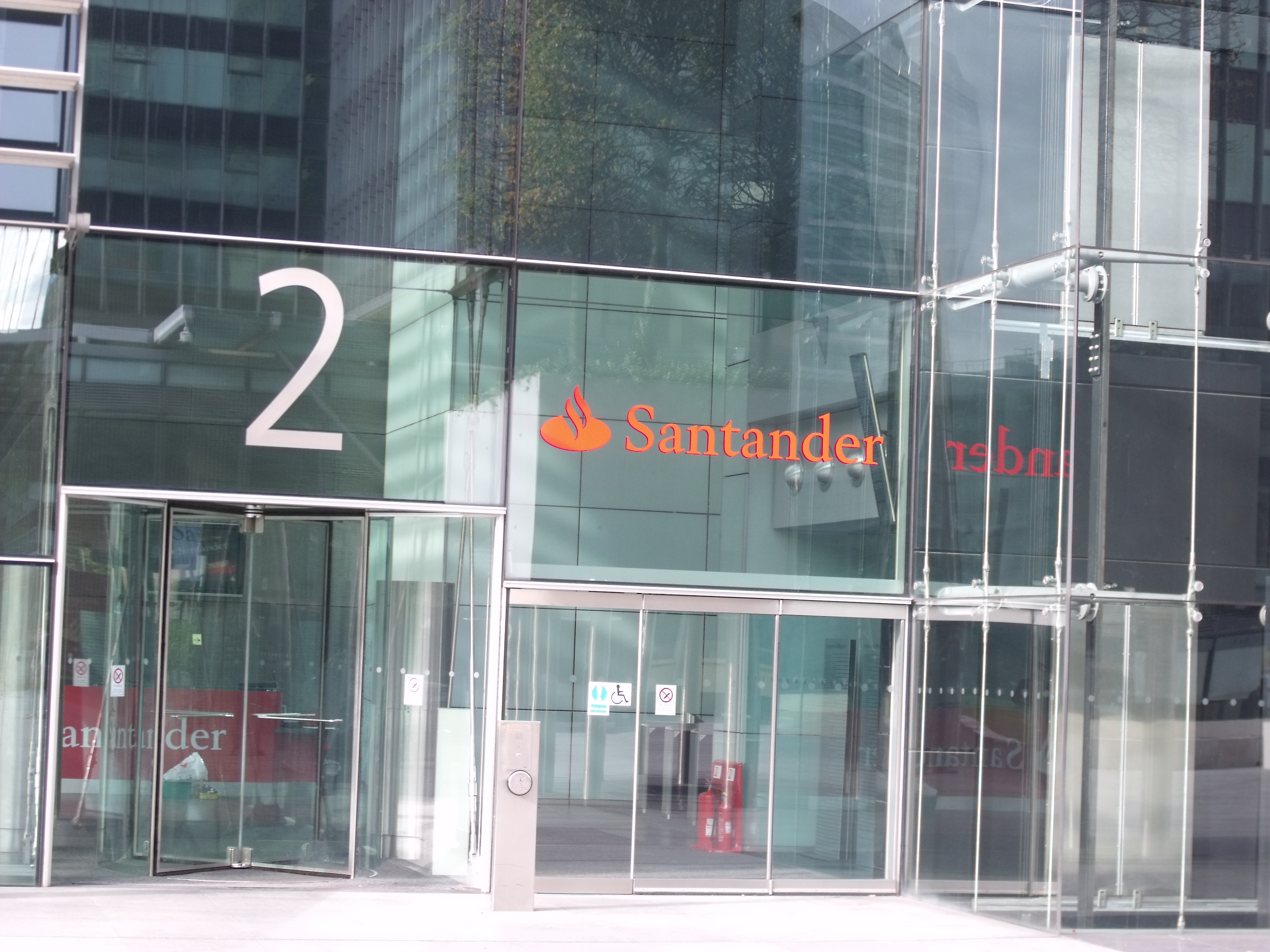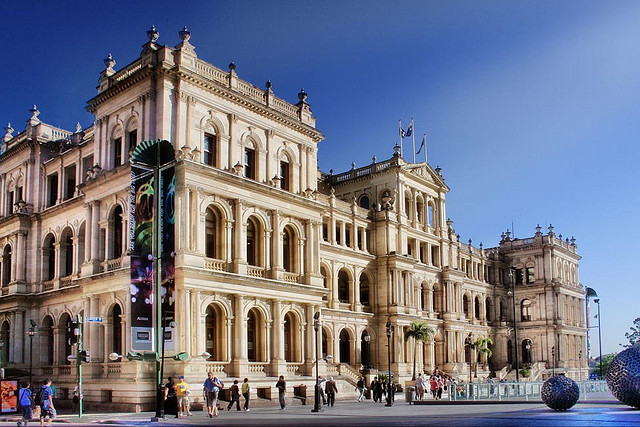|
Alliance And Leicester
Alliance & Leicester plc was a British bank and former building society, formed by the merger in 1985 of the Alliance Building Society and the Leicester Building Society. The business demutualised in the middle of 1997, when it was floated on the London Stock Exchange. It was listed in the FTSE 250 Index, and had been listed in the FTSE 100 Index from April 1997 until June 2008. After running into difficulty during the financial crisis, the bank was acquired by the Santander Group in October 2008, and transferred its business into Santander UK plc in May 2010. It was fully integrated and rebranded as Santander by the end of 2011. The bank's international subsidiary based in Douglas, Isle of Man, Alliance & Leicester International, continued to use the name Alliance & Leicester, until it was fully merged into Santander UK in May 2013. History Early history The Alliance & Leicester Building Society was formed by the merger of the Alliance Building Society (originally based i ... [...More Info...] [...Related Items...] OR: [Wikipedia] [Google] [Baidu] |
Santander UK
Santander UK plc (, ) is a British bank, wholly owned by the Spanish Santander Group. Santander UK plc manages its affairs autonomously, with its own local management team, responsible solely for its performance. Santander UK is one of the leading personal financial services companies in the United Kingdom, and one of the largest providers of mortgages and savings in the United Kingdom. The bank has circa 20,000 employees, 14 million active customers, 64 corporate business centres. The bank, with its head office in Airdrie, Scotland, was established on 11 January 2010, when Abbey National plc was combined with the savings business and branches of Bradford & Bingley plc, and renamed Santander UK plc. Alliance & Leicester plc merged into the renamed business in May 2010. In a March 2020 moneysavingexpert.com poll, customers satisfaction with the levels of customer service ranked Santander second among major high street banks. In October 2011, Moody's downgraded the credit ra ... [...More Info...] [...Related Items...] OR: [Wikipedia] [Google] [Baidu] |
Windfall Gain
A windfall gain is an unusually high or abundant income, that is sudden and/or unexpected. Types Examples of windfall gains include, but are not limited to: *Gains from demutualization - this example can lead to especially large windfall gains. A study in 1999 into the potential demutualization of the John Lewis Partnership predicted that partners would receive upwards of £100,000 in windfall gains if the company were to be floated on the stock market. *Unexpected inheritance or other large gift from another *Sweepstakes winnings *Winning a lottery or success in another form of gambling *Returns on investments *Proceeds or profit from a large sale *Game show, or other contest winnings *Employment payroll bonus *Natural resources * Foreign aid *Proceeds from an insurance claim *Settlement from a lawsuit *Discoveries from treasure hunting Uses What people do with windfall gains is subject to much debate. While they differ from one account to the next, most economists hypothesize ... [...More Info...] [...Related Items...] OR: [Wikipedia] [Google] [Baidu] |
Treasury
A treasury is either *A government department related to finance and taxation, a finance ministry. *A place or location where treasure, such as currency or precious items are kept. These can be state or royal property, church treasure or in private ownership. The head of a treasury is typically known as a treasurer. This position may not necessarily have the final control over the actions of the treasury, particularly if they are not an elected representative. The adjective for a treasury is normally treasurial. The adjective "tresorial" can also be used, but this normally means pertaining to a ''treasurer''. History The earliest found artefacts made of silver and gold are from Lake Varna in Bulgaria dated 4250–4000 BC, the earliest of copper are dated 9000–7000 BC. The term ''treasury'' was first used in Classical times to describe the votive buildings erected to house gifts to the gods, such as the Siphnian Treasury in Delphi or many similar buildings erected in ... [...More Info...] [...Related Items...] OR: [Wikipedia] [Google] [Baidu] |
Commercial Banking
A commercial bank is a financial institution which accepts deposits from the public and gives loans for the purposes of consumption and investment to make profit. It can also refer to a bank, or a division of a large bank, which deals with corporations or a large/middle-sized business to differentiate it from a retail bank and an investment bank. Commercial banks include private sector banks and public sector banks. History The name ''bank'' derives from the Italian word ''banco'' "desk/bench", used during the Italian Renaissance era by Florentine bankers, who used to carry out their transactions on a desk covered by a green tablecloth. However, traces of banking activity can be found even in ancient times. In the United States, the term commercial bank was often used to distinguish it from an investment bank due to differences in bank regulation. After the Great Depression, through the Glass–Steagall Act, the U.S. Congress required that commercial banks only engage in ba ... [...More Info...] [...Related Items...] OR: [Wikipedia] [Google] [Baidu] |
Personal Banking
Retail banking, also known as consumer banking or personal banking, is the provision of services by a bank to the general public, rather than to companies, corporations or other banks, which are often described as wholesale banking. Banking services which are regarded as retail include provision of savings and transactional accounts, mortgages, personal loans, debit cards, and credit cards. Retail banking is also distinguished from investment banking or commercial banking. It may also refer to a division or department of a bank which deals with individual customers. In the U.S., the term commercial bank is used for a ''normal'' bank to distinguish it from an investment bank. After the Great Depression, the Glass–Steagall Act restricted normal banks to banking activities, and investment banks to capital market activities. That distinction was repealed in the 1990s. Commercial bank can also refer to a bank or a division of a bank that deals mostly with deposits and loans from co ... [...More Info...] [...Related Items...] OR: [Wikipedia] [Google] [Baidu] |
Mortgage Loan
A mortgage loan or simply mortgage (), in civil law jurisdicions known also as a hypothec loan, is a loan used either by purchasers of real property to raise funds to buy real estate, or by existing property owners to raise funds for any purpose while putting a lien on the property being mortgaged. The loan is " secured" on the borrower's property through a process known as mortgage origination. This means that a legal mechanism is put into place which allows the lender to take possession and sell the secured property ("foreclosure" or " repossession") to pay off the loan in the event the borrower defaults on the loan or otherwise fails to abide by its terms. The word ''mortgage'' is derived from a Law French term used in Britain in the Middle Ages meaning "death pledge" and refers to the pledge ending (dying) when either the obligation is fulfilled or the property is taken through foreclosure. A mortgage can also be described as "a borrower giving consideration in the form ... [...More Info...] [...Related Items...] OR: [Wikipedia] [Google] [Baidu] |
Alliance And Leicester, Omagh, January 2010
An alliance is a relationship among people, groups, or states that have joined together for mutual benefit or to achieve some common purpose, whether or not explicit agreement has been worked out among them. Members of an alliance are called allies. Alliances form in many settings, including political alliances, military alliances, and business alliances. When the term is used in the context of war or armed struggle, such associations may also be called allied powers, especially when discussing World War I or World War II. A formal military alliance is not required for being perceived as an ally—co-belligerence, fighting alongside someone, is enough. According to this usage, allies become so not when concluding an alliance treaty but when struck by war. When spelled with a capital "A", "Allies" usually denotes the countries who fought together against the Central Powers in World War I (the Allies of World War I), or those who fought against the Axis Powe ... [...More Info...] [...Related Items...] OR: [Wikipedia] [Google] [Baidu] |
Bradford & Bingley
Bradford & Bingley plc was a British bank with headquarters in the West Yorkshire town of Bingley. The bank was formed in December 2000 by demutualisation of the Bradford & Bingley Building Society following a vote of the building society's members, who swapped their nominal share of the building society for at least 250 shares of the newly formed bank. In 2008, partly due to the credit crunch, the bank was nationalised and in effect split into two parts; the mortgage book and investment portfolios remained with the now publicly owned Bradford & Bingley plc, and the deposits and branch network (and a licence to use the B&B name for those aspects) was sold to Abbey National, itself owned by the Spanish Santander Group. The branch network was rebranded Santander on 11 January 2010 and the Bradford & Bingley name mainly relates to the nationalised section of the bank. From 2010, the brand has been used under licence for insurance products by BGL Group. History The Merger The ... [...More Info...] [...Related Items...] OR: [Wikipedia] [Google] [Baidu] |
Abbey National
The Abbey National Building Society was formed in 1944 by the merger of the Abbey Road and the National building societies. It was the first building society in the United Kingdom to demutualise, doing so in July 1989. The bank expanded through a number of acquisitions in the 1990s, including James Hay, Scottish Mutual, Scottish Provident and the rail leasing company Porterbrook. Abbey National launched an online bank, Cahoot, in June 2000. In September 2003, the bank rebranded as Abbey, and in November 2004, it became a wholly owned subsidiary of the Spanish Santander Group, with a rebrand following in February 2005. In January 2010, the savings business of Bradford & Bingley was combined with the bank, and Abbey National plc was renamed Santander UK plc. Prior to the takeover, Abbey National plc was a constituent of the FTSE 100 Index. History Pre-merger: The National Building Society The National Building Society had its origins in the freehold land movement, sometimes ca ... [...More Info...] [...Related Items...] OR: [Wikipedia] [Google] [Baidu] |
Financial Services And Markets Act 2000
The Financial Services and Markets Act 2000c 8 is an Act of the Parliament of the United Kingdom that created the Financial Services Authority (FSA) as a regulator for insurance, investment business and banking, and the Financial Ombudsman Service to resolve disputes as a free alternative to the courts. The Act was considerably amended by the Financial Services Act 2012 and the Bank of England and Financial Services Act 2016. Contents Some of the key sections of this act are: ;Part I The Regulator * Section 1A outlines the regulatory objectives of the Financial Conduct Authority: (a) market confidence; (b) financial stability (c) public awareness; (d) the protection of consumers; and (e) the reduction of financial crime. * Section 2A establishes the Prudential Regulation Authority ;Part II Regulated And Prohibited Activities * Section 19 requires firms to be authorised to conduct regulated activities. * Section 21 makes it a criminal offence to issue a financial promotion ( ... [...More Info...] [...Related Items...] OR: [Wikipedia] [Google] [Baidu] |
Royal Courts Of Justice
The Royal Courts of Justice, commonly called the Law Courts, is a court building in Westminster which houses the High Court and Court of Appeal of England and Wales. The High Court also sits on circuit and in other major cities. Designed by George Edmund Street, who died before it was completed, it is a large grey stone edifice in the Victorian Gothic Revival style built in the 1870s and opened by Queen Victoria in 1882. It is one of the largest courts in Europe. It is a Grade I listed building. It is located on Strand within the City of Westminster, near the border with the City of London ( Temple Bar). It is surrounded by the four Inns of Court, St Clement Danes church, The Australian High Commission, King's College London and the London School of Economics. The nearest London Underground stations are Chancery Lane and Temple. The Central Criminal Court, widely known as the Old Bailey after its street, is about to the east—a Crown Court centre with no direct connection ... [...More Info...] [...Related Items...] OR: [Wikipedia] [Google] [Baidu] |
Delisting (stock)
In corporate finance, a listing refers to the company's shares being on the list (or board) of stock that are officially traded on a stock exchange. Some stock exchanges allow shares of a foreign company to be listed and may allow dual listing, subject to conditions. Normally the issuing company is the one that applies for a listing but in some countries an exchange can list a company, for instance because its stock is already being traded via informal channels. Stocks whose market value and/or turnover fall below critical levels may be delisted by the exchange. Delisting often arises from a merger or takeover, or the company going private. Requirements Each stock exchange has its own listing requirements or rules. Initial listing requirements usually include supplying a history of a few years of financial statements (not required for "alternative" markets targeting young firms); a sufficient size of the amount being placed among the general public (the free float), both in ... [...More Info...] [...Related Items...] OR: [Wikipedia] [Google] [Baidu] |



.jpg)



.jpg)